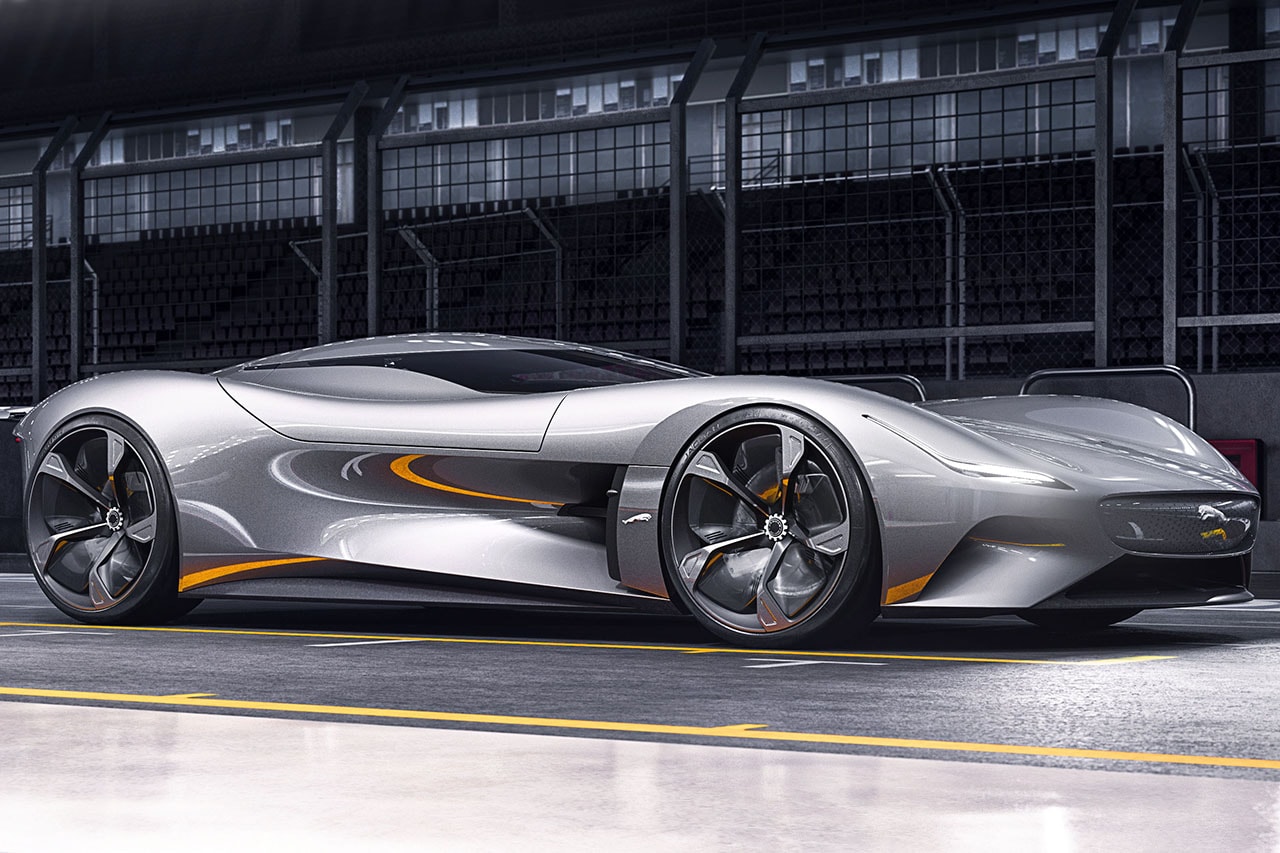
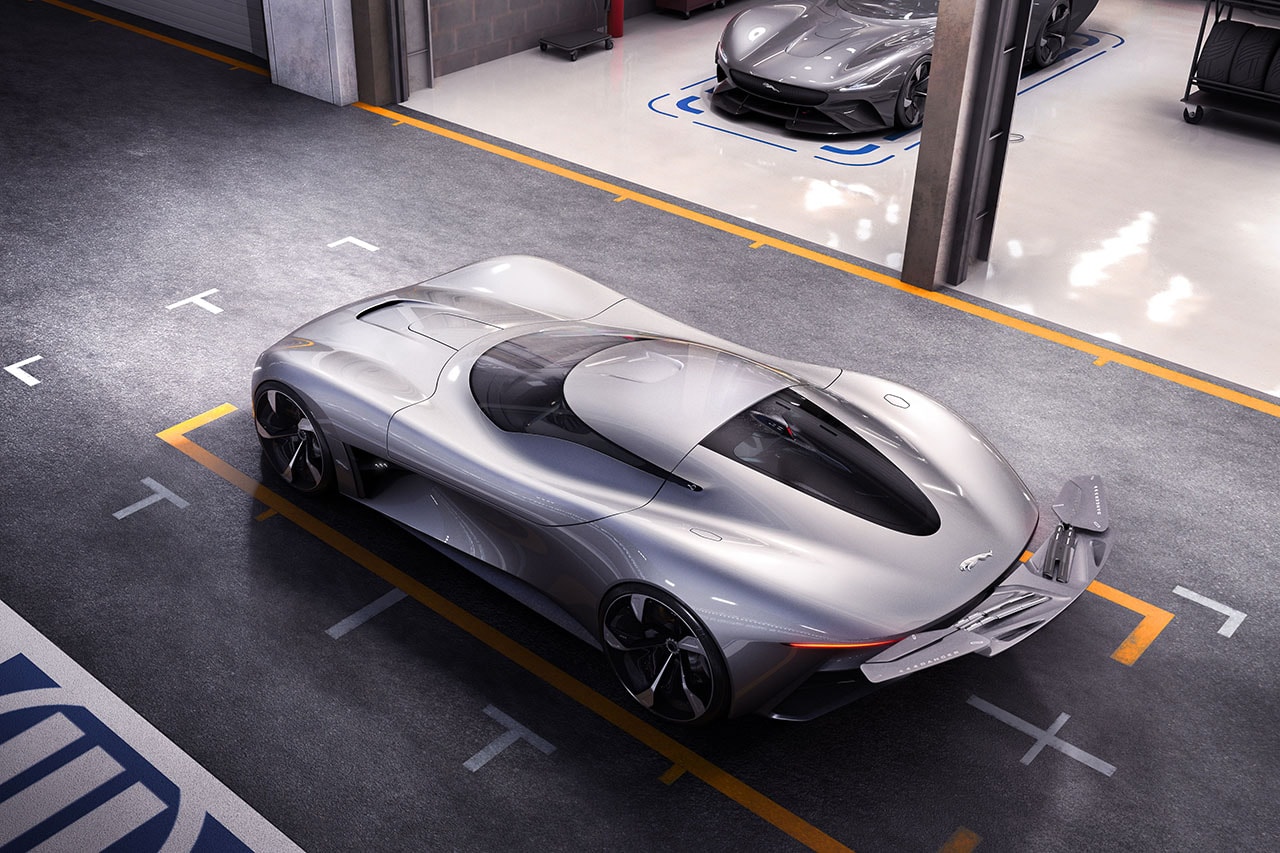
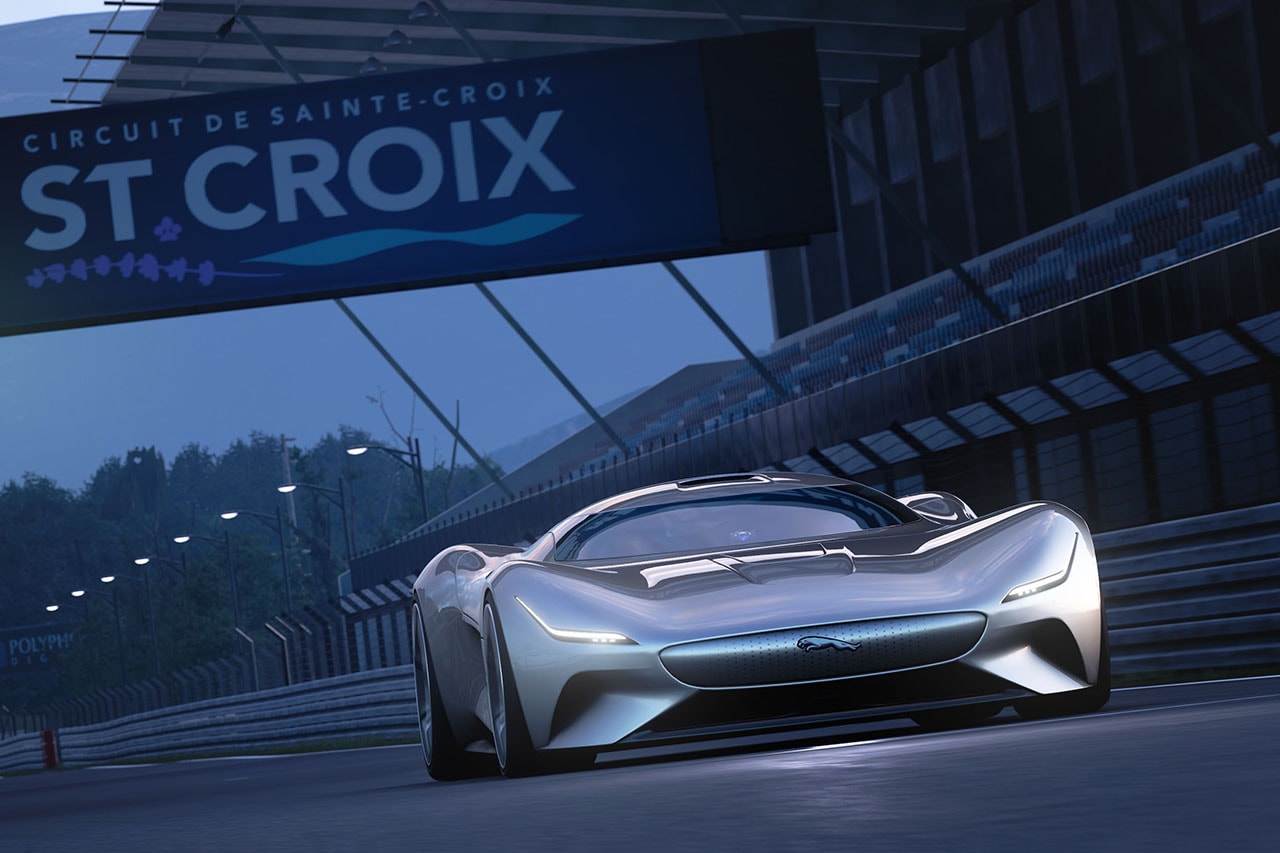
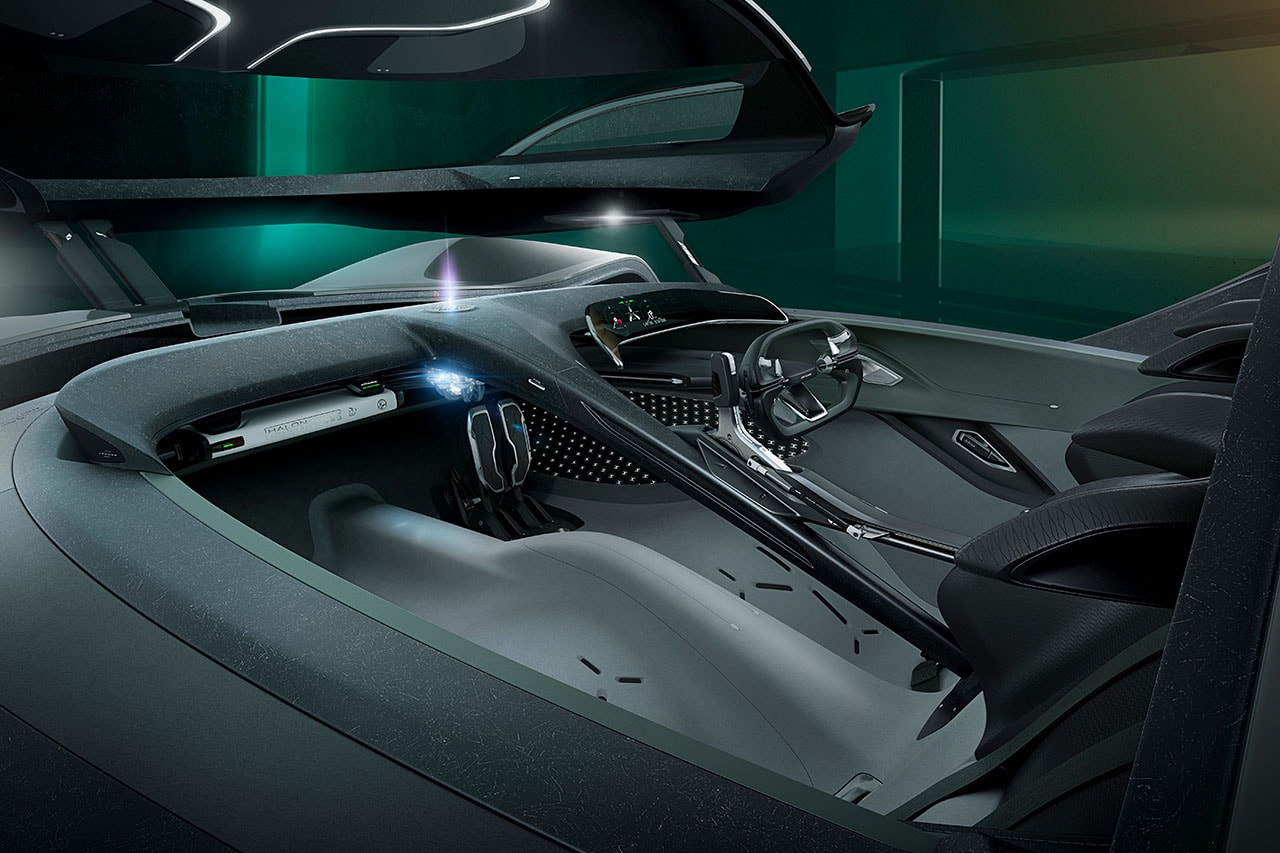
Jaguar has unveiled its first-ever electric hypercar, although it’s a virtual model and it will be exclusively available to drive on Gran Turismo Sport for the PlayStation 4.
The Jaguar Vision Gran Turismo Coupé is an all-electric, all-wheel-drive race car that takes inspiration from the British automotive company’s heritage C-type and D-type racers. It also channels I-TYPE 4 and eTROPHY race cars, incorporating three compact virtual motors to produce 1006 BHP.
The car will be propelled from 0-62 MPH in under two seconds and has a top speed of over 200 MPH. 885 lb-ft of torque will keep the virtual car planted to the race track, while a near-perfect 50:50 weight distribution and a 1,400 kg curb-weight means it will handle excellently.
On the outside, Jaguar has graced the Vision Gran Turismo Coupé with a deployable active aero wing to optimize energy efficiency, as well as a long-nose design that increases its aerodynamic abilities. Inside, players will find themselves at the center of attention and completely driver-focused, with a cockpit divided by a bridge that houses the futuristic gear lever. Jaguar had full creative freedom with its design, and even included an on-board AI system called “KITT-E” which delivers information to the driver.
A finishing touch to the virtual car is its soundtrack, which takes real recordings of a 1957 Le Mans “603” Long Nose D-type and interweaves this with futuristic electrically-driven sounds. The Jaguar Vision Gran Turismo Coupé will be downloadable for Gran Turismo Sport on the PlayStation 4 from the end of November.
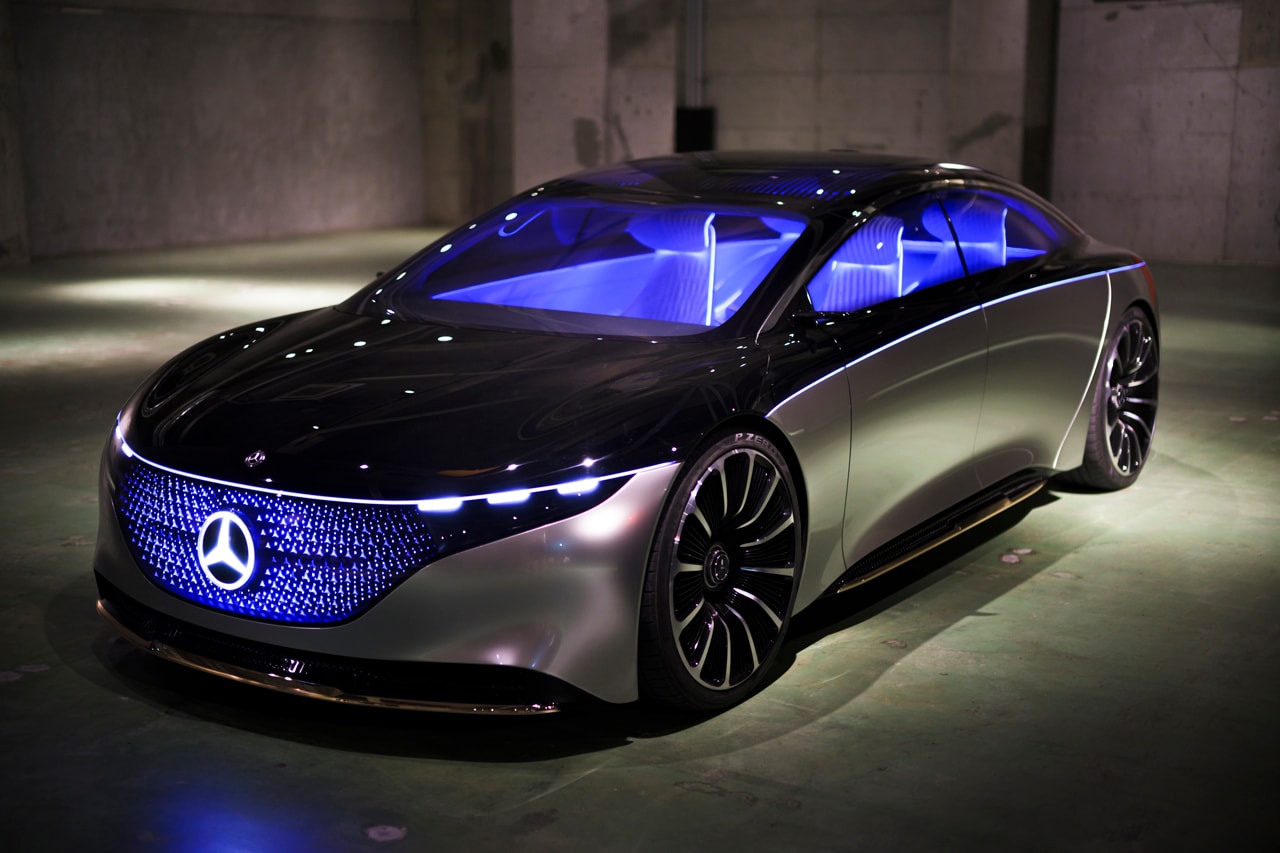

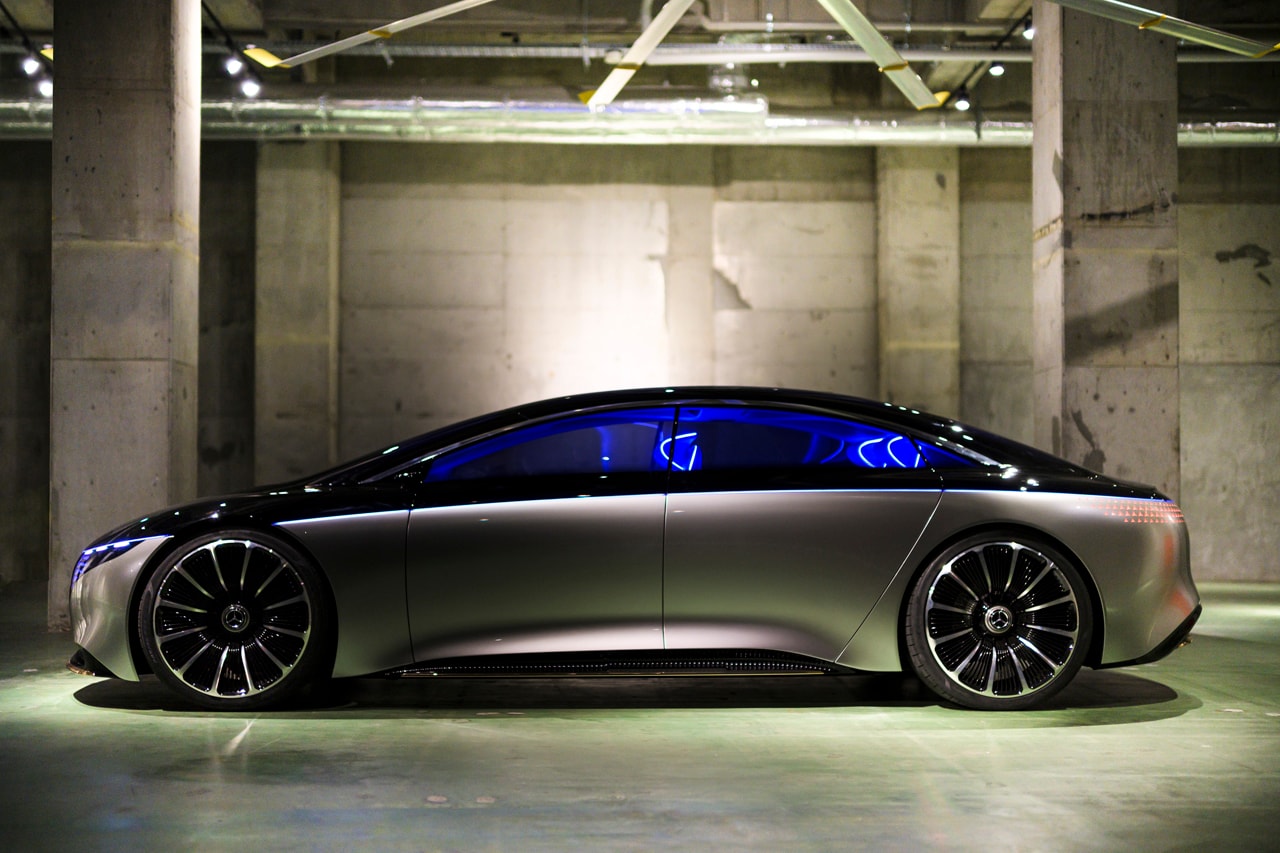
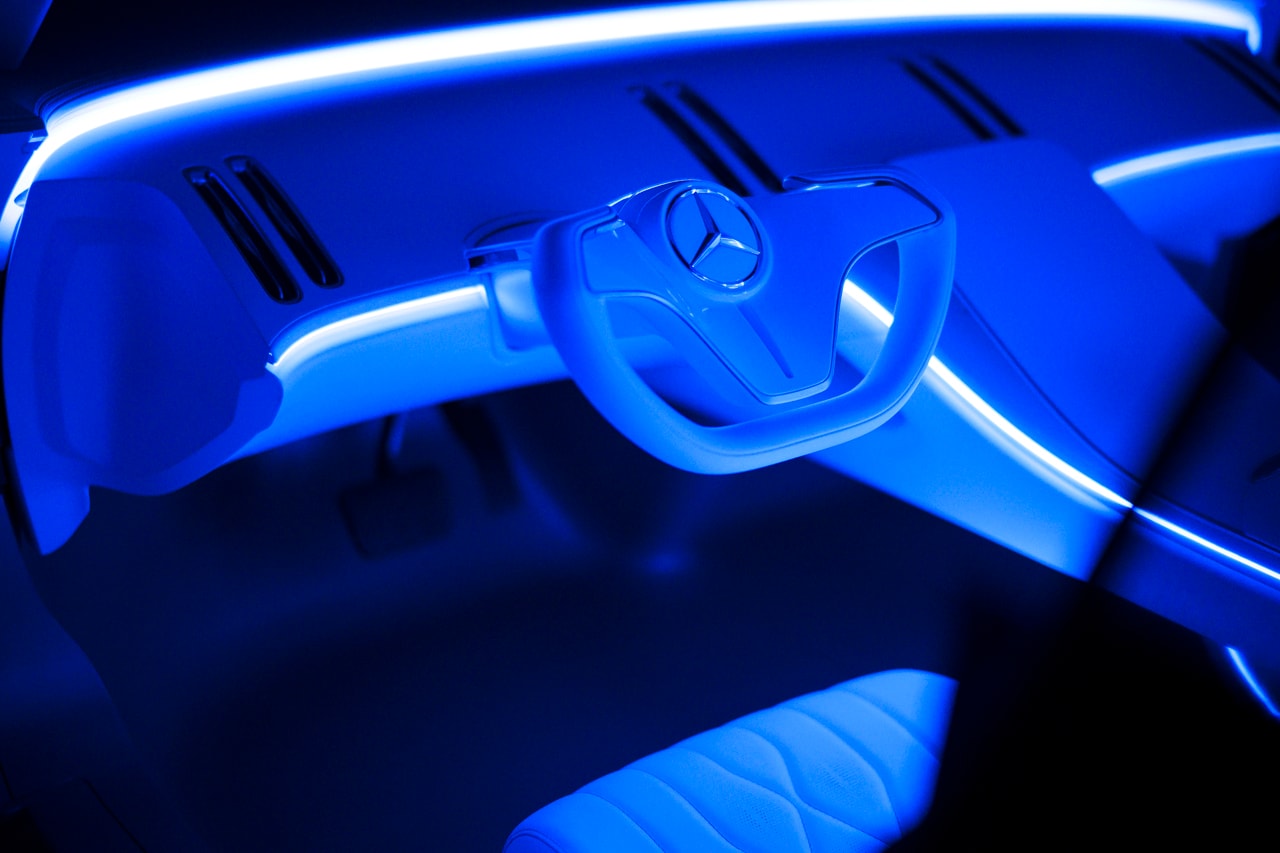

Mercedes-Benz gives us a closer look at its newly-unveiled Vision EQS. The zero emission vehicles is positioned to take on other high-end EVs like the Tesla Model S and Jaguar’s I-PACE, but looks to further differentiate itself via design and performance. As the “S” at the end of “EQS” indicates, this is an extension of Mercedes-Benz’s S-Class in the EQ line of cars — a class dedicated to full-electric, emission-free automobiles.
On the exterior, the Vision EQS implements Mercedes’ “One-Bow” philosophy, crafting a streamline surface that flows from the highly-technical front grille back towards the large shoulders at the rear and onto the bumper. The “Digital Light” headlamps see 500 LEDs in each side that rotate at 2000rpm to give off the appearance of three-dimensional shapes and holographic images. The Matrix Grille is made from 188 individual LEDs and appears to float in front of the car, offering precise signalling that is carried on to the rear with 180 LED three-point stars.
Performance-wise, the EQS is capable of traveling 0-100 km/h in 4.5 seconds, and has a total output of 470 bhp and 560 lb-ft of torque. The fully-electric luxury saloon is capable of traveling up to 700 kms on a full charge, and can make up 80% of that distance with just 20 minutes of charging. Keeping the car grounded are a set (front and rear) of 24-inch wheels and a fully variable AWD system.
The streamline design continues in the interior of the car where the Mercedes-Benz User Experience (MBUX) is fully realized. Taking inspiration from luxury yachts, the leaning dashboard instrument panel screen reaches forward and flows towards the passengers — wrapping and blending in the door panels. While this is still just a Vision Concept from Mercedes-Benz, this teaser of things to come gives us some insight as to what’s in store for Mercedes-Benz and its future plans for EVs.
We met up with the Head of Advanced Design, Holger Hutzenlaub, to find out what designing the exterior of the Vision EQS was like. Read the brief conversation below:
What is the vision behind the Mercedes EQ line and how is it incorporated into the design?
The Vision EQS is our first luxury S-Class level electric limousine. From the beginning, the design purpose was to offer a new level of luxury but not so much in the traditional way but in a more progressive, modern style. Due to the fact that we had a new drive chain given a new battery being located under the floor, we had to stretch the wheels. Thus, we were able to add a new, radical proportion.
What was the design premise?
We had to create the DNA of our new EQ design and strategy. When setting up the EQ as a sub-brand inside the Mercedes family, we obviously had to come up with some significant design elements.
In addition, we wanted to create a completely new dedicated electric architecture. We’ve had to make it visionary on the one side but also make it realistic on the other in order to achieve a new design for the S-class. Since the electric platform was coming with an extended wheelbase and shorter front and rear overhang, there was a need to recreate the whole proportion of the car. The proportion is the first important element that you have to create. Proportion stands for the wheel-to-body relation as well as the relation from the front overhang to the body and the rear overhang.
Furthermore, we wanted to highlight human-machine interaction in this car with a strong interior-exterior interaction in this car. For example, we connected the rear and the front light band with a 360 degree light belt so to say. And this not just a light function but also a type of protection function. Whenever somebody is approaching the car from whichever side ever, this light band can detect a person, a passenger or a bicyclist, and then it’s showing the person/individual on the interior 360-degree light band.
What about the logo and the role it plays for the design?
We have been a little bit too shy or even modest using our logo as a design element in the past. With this car, we’ve reached a level of refinement and a new interpretation of digital luxury by showing this logo front grill and rear lamps. We’ve used the logo like pixels actually, creating shapes, giving depth to the grill, making it a functional part of the design. Thanks to this, the car has a very modern appearance unlike to what we are seeing in our current cars.
You have to be careful in having too many logos on the car because it might cause an inflation. There are certain areas, especially the combination of the light technology and the star pattern, where we said instead of having a regular pattern in the front, why not use the star as a brand icon, and create something more unique. From the distance when you look at the car and its lights, you can outline a certain structuring element but you can’t tell what it is exactly. When you come closer, you will notice this nice, little detail. Obviously, fashion brands have been using this approach as well.
The design is quite minimalistic compared to previous models. Why is that?
What is essential to this car is the way we’re treating services. As a human being, you are attracted by objects that are kind of similar in their appearance like yourself. It’s always necessary that a car doesn’t have too many lines destroying shape and irritating the eye. The clearer the shape is, the more you will accept it as something you want to be close to. On the other side, if you create a piece of soap without any corrector lines/elements, then it becomes a boring product. It’s always the balance you have to keep carefully; create something that really attracts you [with] its clean, pure shape on the one hand, [but] have some elements such as the trim parts in the lower area in the exterior or the diffuser on the front or rear. [Everything] supports this overall pure and reduced design being a little more crisp in their expression.
What can you tell us about the interior design?
It is quite radical. We created a very spacious, luxurious interior without having any middle tunnel. The whole atmosphere is very light, having floating middle console with a flat dash in front of you. The pure, natural shape of the seats, like a folded leaf, the dashboard reminiscent of a nice yacht create a perfect harmony as well as the vertical vents create perfect harmony. It’s good for the eye to have a relaxed feeling with this wide, clean surfacing coupled with little details.
What are the design highlights for you personally?
The proportion of the car itself. It’s a nicely stretched bow design that we applied on this car, using senior’s design language. Hence, there’s no transition — it’s a very streamlined, dynamic design, which is necessary for this category of electric cars. We had to reach a long range so the aerodynamics are extremely necessary.
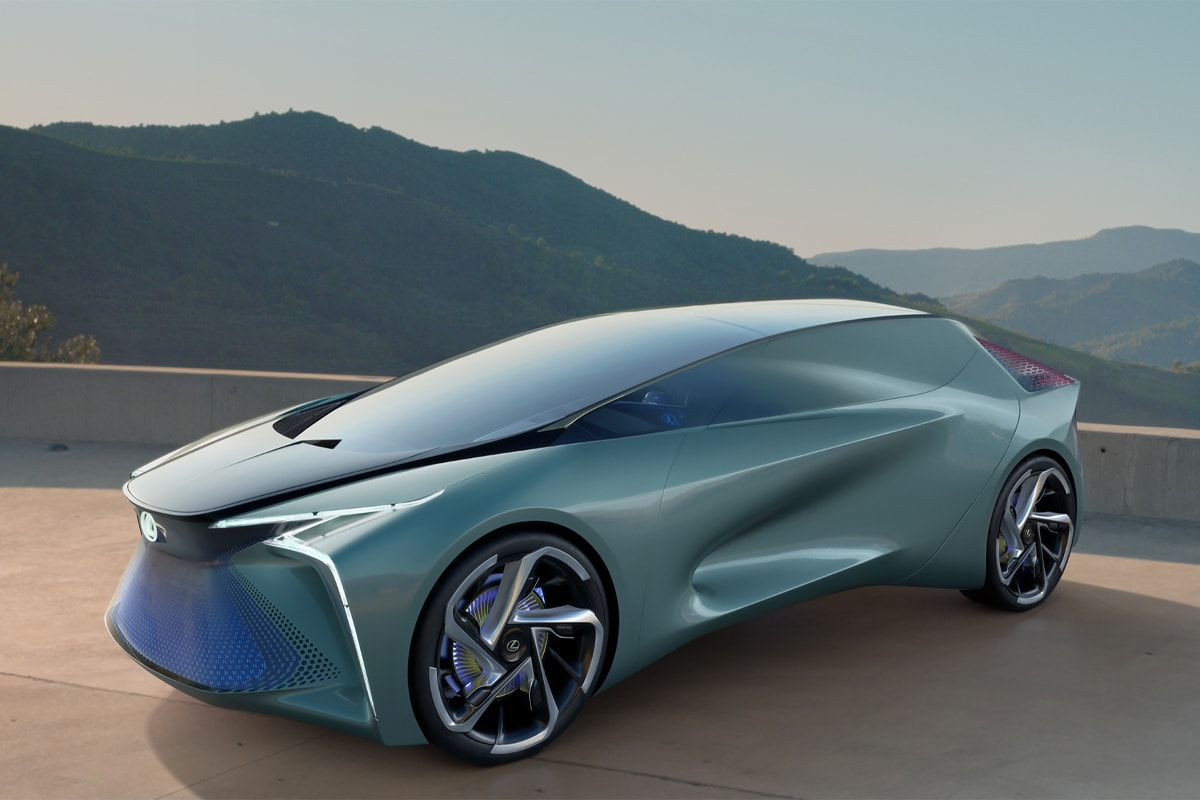
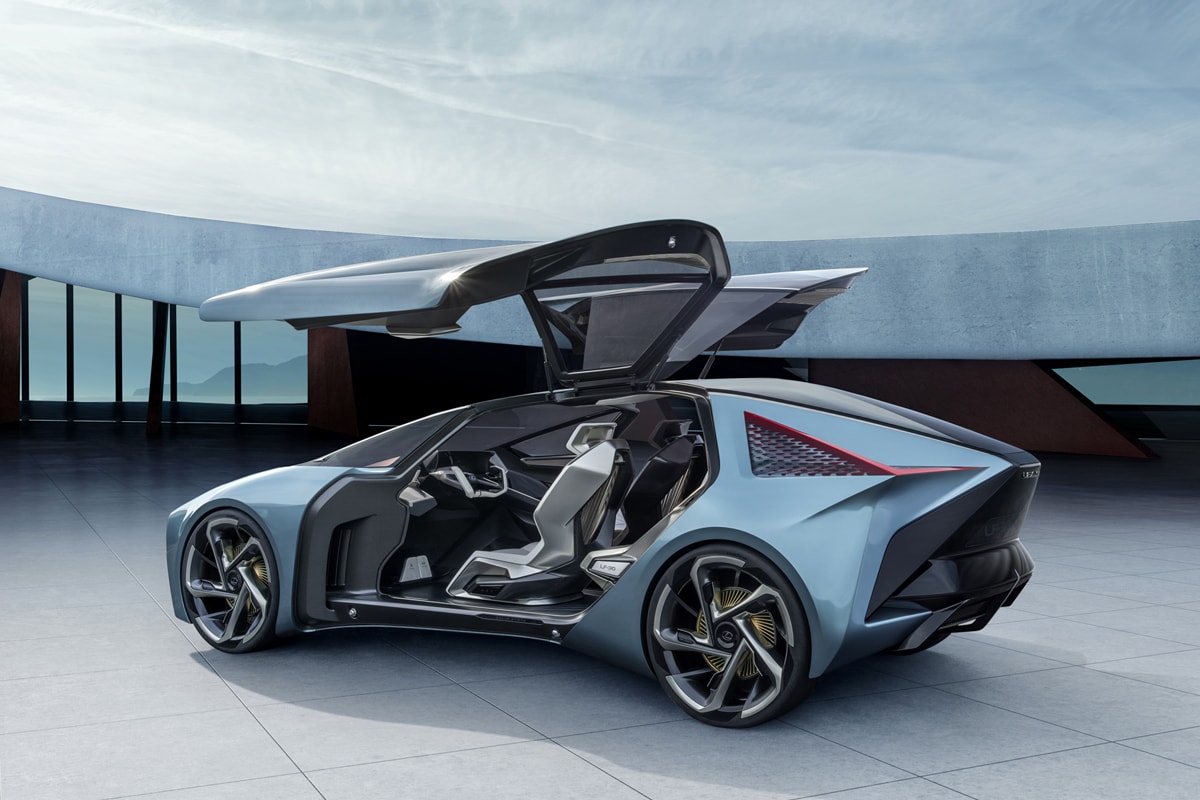
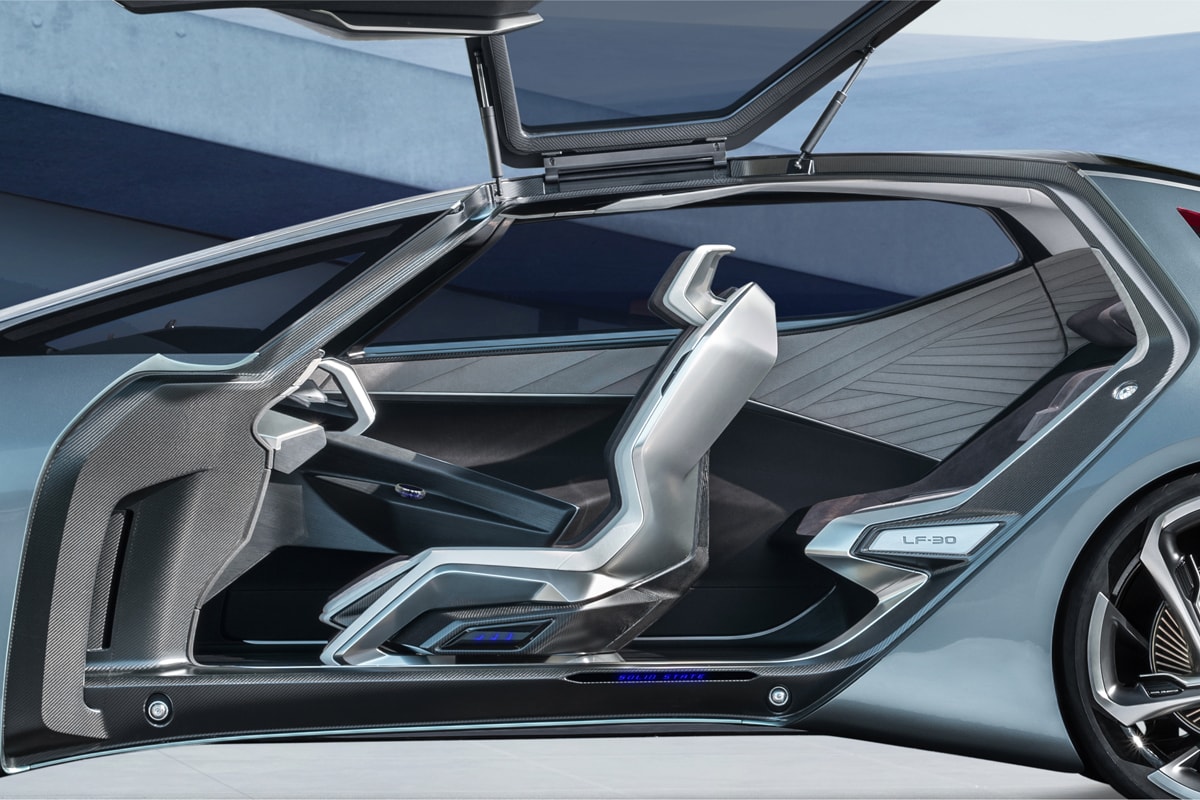
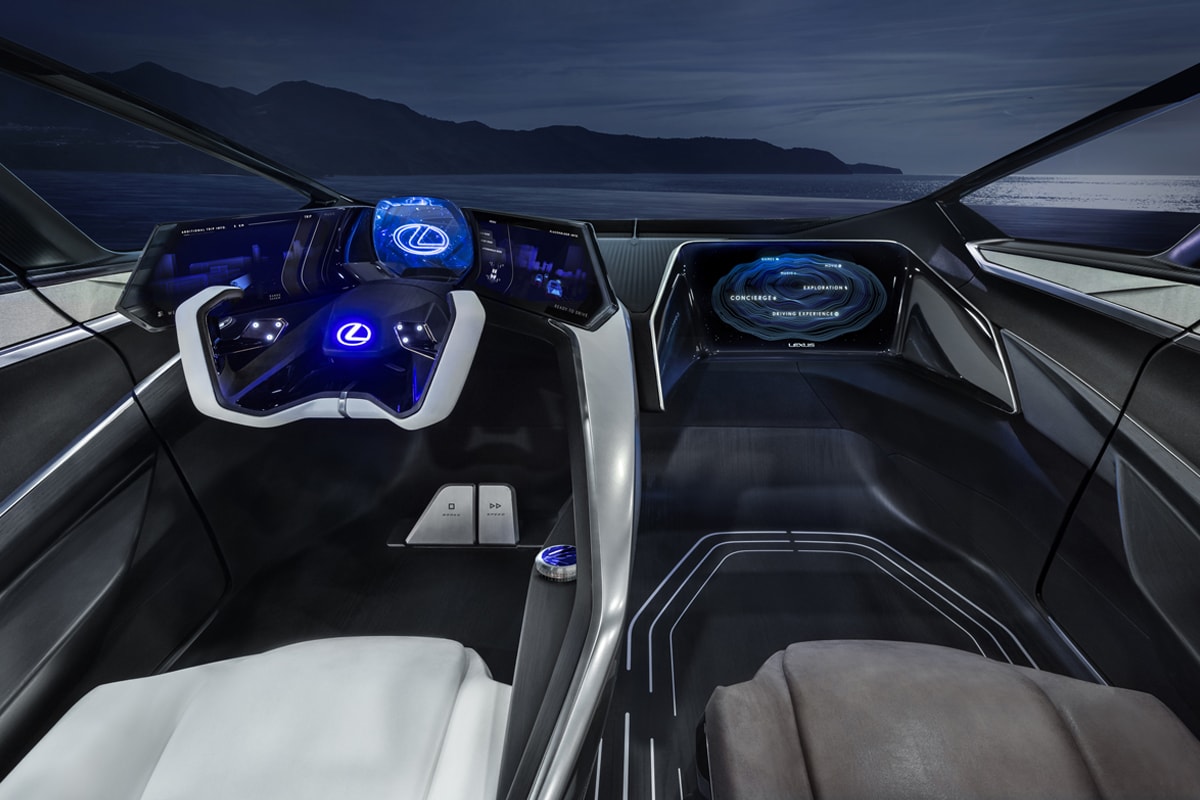
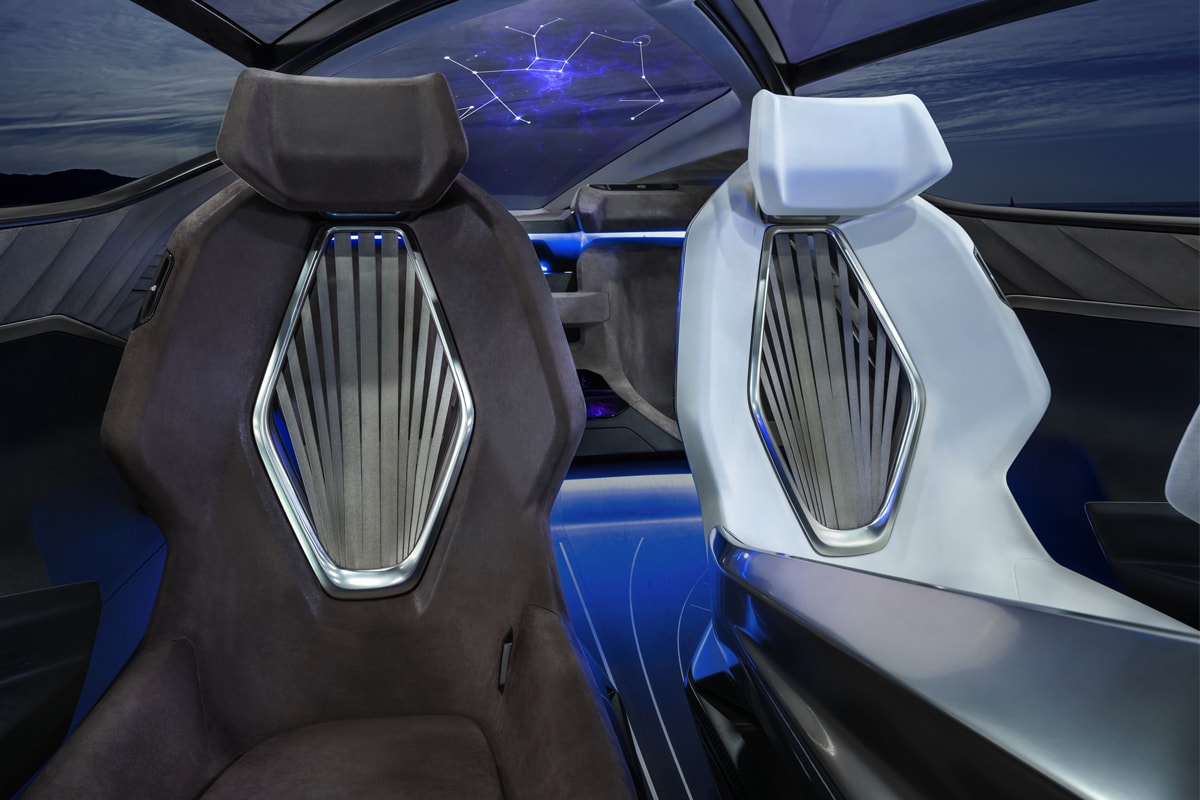





Toyota has long held the stance of opposing fully electric vehicles, instead standing behind its own hybrid program. However, it now seems that the company is willing to break from tradition, unveiling for the first time ever a fully electric concept car for its luxury brand, Lexus. The new EV, named LF-30, carries four in-wheel motors which together can push out 536 horsepower, allowing the 5,300-pound car to travel 0-60 mph in just 3.8 seconds. Range-wise, its 110kWh battery pack gives the LF-30 a reach of 310 miles in a single charge, and can charge at a 150 kW rate.
While most industry experts believe the newly unveiled concept is more of a statement from the company of its intention to move into the EV industry than a preview of what’s to come, Lexus did however announce that its first production EV will debut next month, most likely at the LA Auto Show, which will subsequently be available in 2020. On top of this, its parent company Toyota has announced plans to release 10 EVs by early 2020, hoping that the bulk of its sales will transfer over to its more sustainability-minded range.

No comments:
Post a Comment